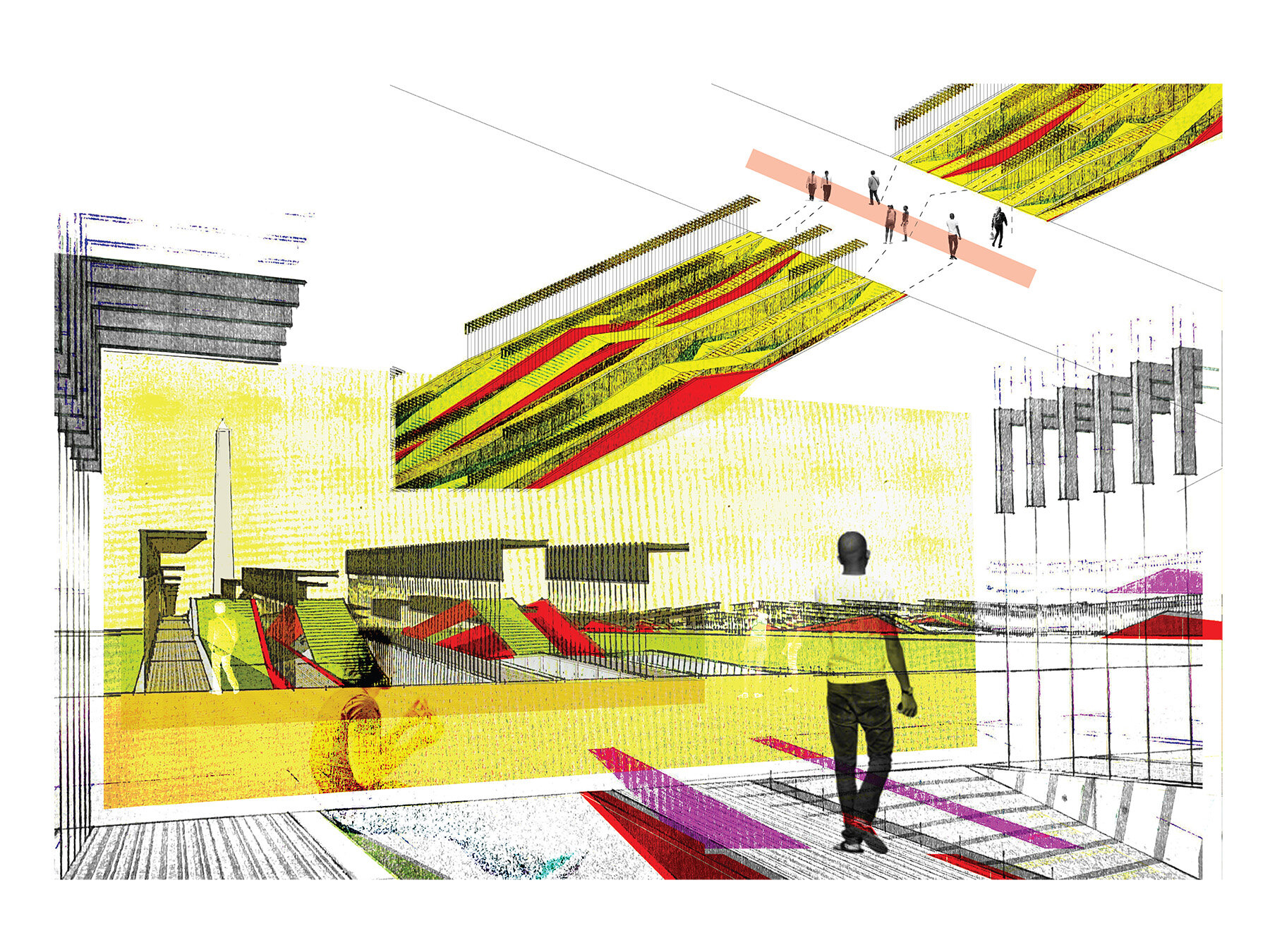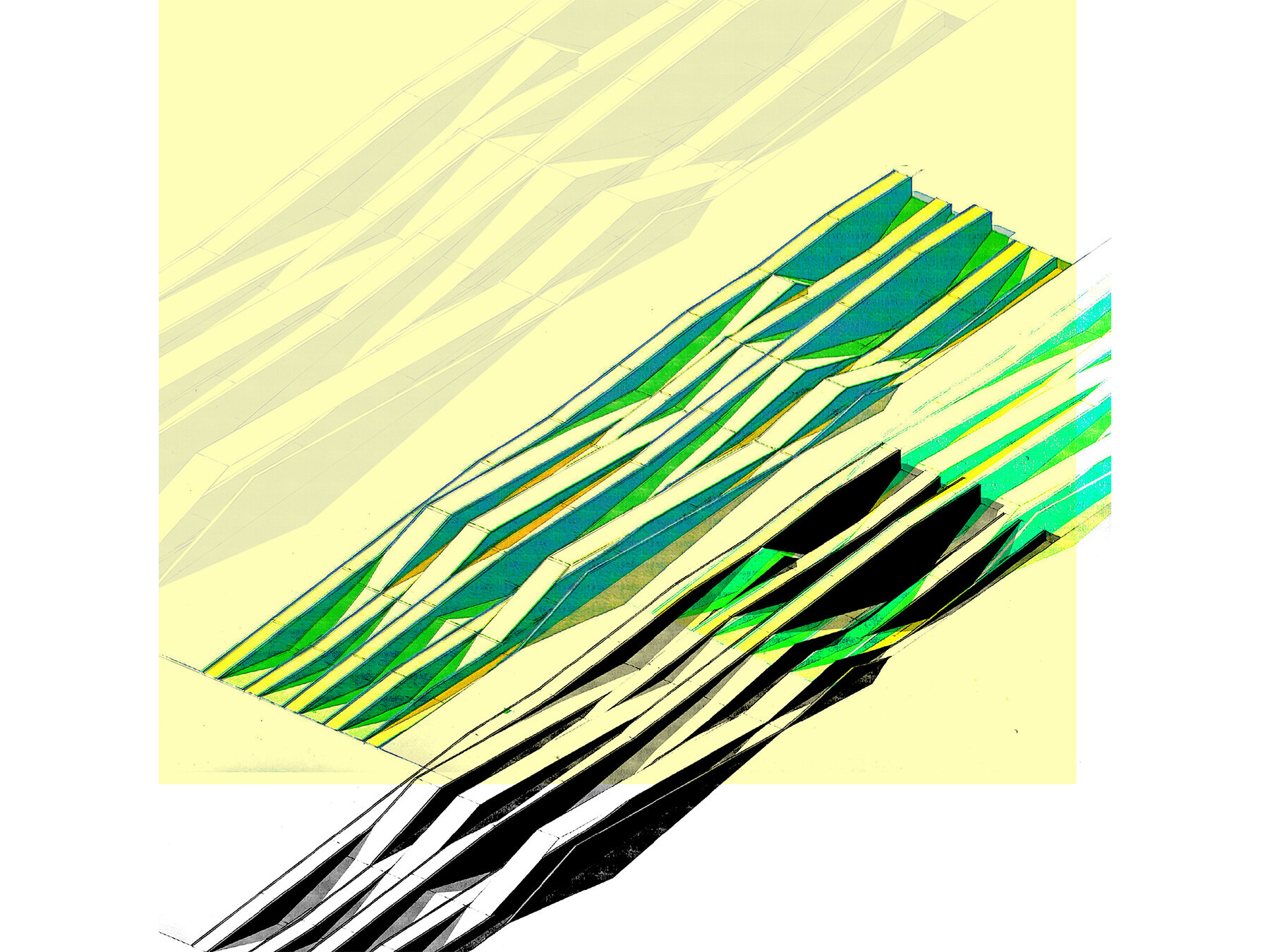


UNDULATING LANDSCAPE:
NATIONAL MALL
Where: National Mall DC
When: Summer 2020
Excerpt from competition publication
Washingtonian Magazine COVID-19 Design Competition.
Even after society resumes some degree of normalcy, the average American will still experience the lingering effects of social distancing - whether it be by overt action or a matter of habit. Being “six feet apart” from one another may be the new normal for quite some time. So, why not embrace it?
The rhetoric around public space planning has largely been around limiting large groups of people gathering in one place. The discourse around public gathering often imagines this “limit” as a shape or volume that can be easily accounted for: a restaurant, a concert hall, a sports arena etc. Managing human to human proximity from a linear or circulatory approach could be just as crucial due to the number of close proximity encounters that occur on a typical sidewalk or public pathway.
This project is sited on the National Mall. Specifically on the 42 ft. wide earthen paths than line the central gathering space of the Mall. There are a few times a decade (primarily inaugurations) when the National Mall is used to its full capacity. However, much of the time it is used by solitary joggers, lunch-time museum goers and dog-walkers. The path is unprogrammed, and wide enough that it’s really a space in and of itself.
This proposal challenges that notion of openness by proposing a series of surgical pathways, alternating between linear landscape features and pedestrian paths. Each pedestrian pathway is separated by 6 ft. of rolling landscape, which undulates vertically to create moments of refuge and upheaval. Each path rises or falls 1 ft over a 20 ft span, maintaining universal accessibility, giving the user of the space a continually evolving perspective of the surrounding monuments and museums.
Each path is one-way, and has alternating overhead horizontal members which create varying conditions of light and shadow as one progresses down their path either individually or with one other person. This strategy could be implemented in one section of the Mall as an installation, but its full realization would be the continuation of these paths along the entire length of the Mall.
If society does want to maintain social distancing wherever possible, then creating real, physical barriers between users circulating in public space will probably be a necessity. If we as designers can manage those separations with integrated landscape and unique pedestrian experiences, then we can start to transition away from surface level treatments like fencing and toward a more holistic approach to staying six feet apart.